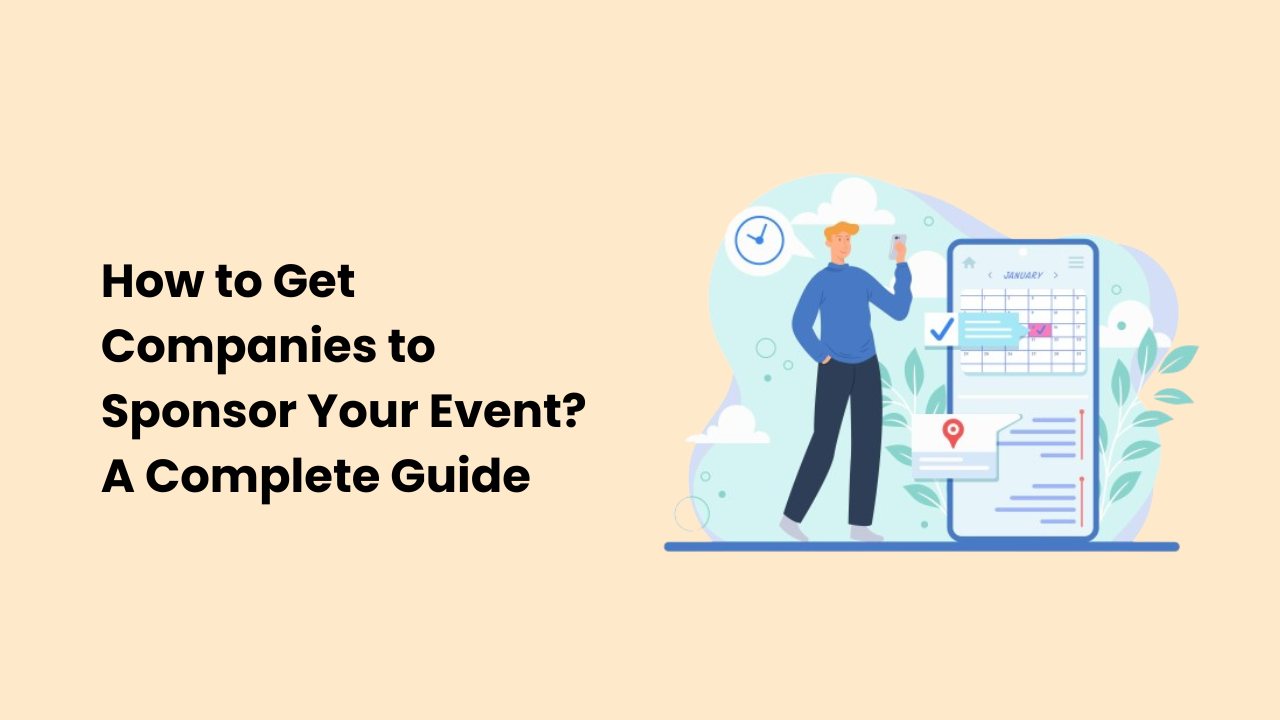
Event sponsorship is a strategic partnership that transforms events by creating mutually beneficial relationships between organizers and corporate partners. In the digital era, sponsorship has evolved beyond traditional financial support to become a sophisticated, data-driven engagement opportunity.
Key Strategies for Successful Event Sponsorship
1. Develop a Compelling Sponsorship Proposal
Key Strategy: Craft a persuasive document that showcases your event’s unique value and potential for sponsors.
Comprehensive Proposal Elements
-
Clear Event Overview: Provide a snapshot of your event’s purpose, scale, and significance.
-
Detailed Audience Demographics: Paint a precise picture of who will be attending and their professional relevance.
-
Projected Attendance Numbers: Demonstrate the potential reach and impact of your event.
-
Sponsorship Package Tiers: Create flexible options that cater to different sponsor budgets and objectives.
-
Unique Value Propositions: Highlight what makes your event stand out from other sponsorship opportunities.
-
Potential Marketing Opportunities: Showcase innovative ways sponsors can gain visibility and engagement.
2. Understand Sponsor Motivations
Key Strategy: Dive deep into the strategic objectives that drive corporate sponsorship decisions.
Primary Sponsor Objectives
-
Brand Visibility: Provide platforms for maximum brand exposure and recognition.
-
Lead Generation: Offer structured opportunities to connect with potential business prospects.
-
Audience Engagement: Create interactive experiences that allow meaningful interaction with target demographics.
-
Market Positioning: Help sponsors establish themselves as industry leaders and innovators.
-
Networking Opportunities: Design spaces and moments for valuable professional connections.
-
Corporate Social Responsibility: Align sponsorship with meaningful community or industry impact.
3. Leverage Technology in Event Sponsorship
Key Strategy: Integrate cutting-edge digital solutions to enhance sponsor value and engagement.
Digital Integration Strategies
-
Mobile Event App Integration: Embed sponsor logos and interactive features within event mobile apps.
-
Digital Event Badging: Create smart, sponsor-integrated identification systems.
-
Sponsored Check-In Experiences: Transform event check-in into a branded, engaging touchpoint.
-
Targeted Digital Advertising: Utilize event ticketing platforms for precise sponsor visibility.
4. Audience Targeting and Data Presentation
Key Strategy: Transform raw data into compelling narratives that demonstrate event value.
Key Data Points to Showcase
-
Audience Demographics: Provide granular insights into attendee profiles.
-
Professional Backgrounds: Highlight the quality and influence of your audience.
-
Social Media Reach: Demonstrate potential extended visibility beyond the event.
-
Previous Event Metrics: Share success stories and quantifiable achievements.
-
Potential Lead Generation: Illustrate the concrete business opportunities for sponsors.
5. Crafting Attractive Sponsorship Packages
Key Strategy: Design flexible, comprehensive sponsorship tiers that cater to diverse corporate objectives.
Sponsorship Tier Structure
-
Platinum Level: Premium, comprehensive sponsorship with maximum visibility and engagement.
-
Gold Level: Substantial sponsorship with significant brand integration.
-
Silver Level: Moderate sponsorship with targeted visibility options.
-
Bronze Level: Entry-level sponsorship with fundamental brand presence.
Typical Package Components
-
Logo Placement: Strategic visibility across event materials and digital platforms.
-
Speaking Opportunities: Platforms for thought leadership and brand messaging.
-
Booth Space: Physical presence and interaction zones.
-
Digital Advertising: Targeted online and mobile event app promotions.
-
Event Check-In Recognition: Branded welcome experiences.
-
Mobile Event App Visibility: Integrated digital presence throughout the event ecosystem.
6. Building and Nurturing Sponsor Relationships
Key Strategy: Develop long-term partnerships that extend beyond single-event interactions.
Relationship Management Strategies
-
Regular Communication: Maintain consistent, transparent dialogue.
-
Comprehensive Reports: Provide detailed post-event analytics and insights.
-
Personalized Follow-Up: Tailor interactions to specific sponsor objectives.
-
Long-Term Partnership Approach: View each sponsorship as a potential ongoing relationship.
-
Transparent Performance Metrics: Offer clear, measurable outcomes and impact.
7. Innovative Sponsorship Activation Ideas
Key Strategy: Create unique, memorable experiences that differentiate your event sponsorship opportunities.
Creative Sponsorship Opportunities
-
Interactive Event Badging: Transform traditional identification into engaging brand experiences.
-
Sponsored Networking Sessions: Design targeted interaction platforms.
-
Digital Scavenger Hunts: Create gamified sponsor engagement mechanisms.
-
Augmented Reality Experiences: Integrate cutting-edge technological interactions.
-
Sponsored Mobile Event App Features: Develop unique, sponsor-integrated digital experiences.
Conclusion
Successful event sponsorship is an art of strategic communication, technological integration, and value creation. By understanding sponsor motivations, leveraging digital platforms, and creating meaningful engagement opportunities, you can transform sponsorship from a financial transaction into a powerful collaborative partnership.
Pro Tip: Continuously evolve your sponsorship strategy by staying ahead of mobile event app technologies and digital engagement trends.
Frequently Asked Questions About Event Sponsorship
1. How Early Should I Start Seeking Sponsors for My Event?
-
Begin sponsorship outreach 6-9 months before your event
-
For large conferences or festivals, start 12 months in advance
-
Create initial sponsorship proposals early
-
Allow time for negotiations and customization
-
Build relationships well before the event deadline
2. What Are the Most Common Sponsorship Mistakes to Avoid?
-
Sending generic, non-personalized proposals
-
Overvaluing sponsorship opportunities
-
Lacking clear return on investment (ROI) metrics
-
Poor communication with potential sponsors
-
Neglecting post-event reporting and follow-up
-
Failing to understand the sponsor’s specific marketing objectives
-
Not leveraging mobile event app and digital engagement opportunities
3. How Can I Demonstrate Value to Potential Sponsors?
-
Provide detailed audience demographic data
-
Share previous event success metrics
-
Highlight mobile event app engagement statistics
-
Demonstrate potential lead-generation opportunities
-
Showcase social media and digital reach
-
Offer comprehensive event check-in and badging visibility
-
Present clear, measurable sponsorship outcomes
4. What Technology Can Enhance Sponsorship Opportunities?
-
Mobile event apps with integrated sponsor features
-
Interactive digital event badging
-
Real-time analytics platforms
-
Augmented reality engagement tools
-
Targeted digital advertising within event platforms
-
Advanced event ticketing systems with sponsor tracking
-
Networking technology that facilitates meaningful connections
5. How Do I Price My Sponsorship Packages?
-
Analyze market rates for similar events
-
Create tiered pricing structures
-
Consider event size and audience quality
-
Factor in unique sponsorship activation opportunities
-
Provide flexible package options
-
Include both monetary and non-monetary value propositions
-
Align pricing with demonstrated event value and sponsor benefits